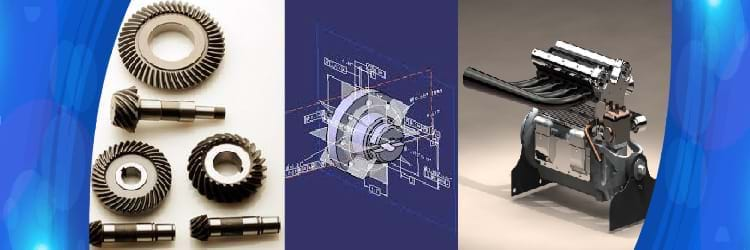Catia

Course Information
Duration: 30 Hours
Fee: $1200
Description
This course is designed to help students learn product design using CATIA, a popular feature-based 3D parametric solid modelling software. In this
course, the students will get in-depth knowledge of all important tools as well as their real world applications in conformity with widely accepted ISO
standards, GD&T, and standard practices followed in manufacturing processes in industry. In addition, students will be assigned a team project of
their choice for better understanding of design intent and will also be required to make a portfolio of the work done.
Topics Covered
1. User Interface and Basics of CATIA
- What is CATIA?
- Different Workbenches and Initial Settings
- Important Terms and Definitions
- Mouse Operations
- File Types
2. Introduction to Sketching
- Invoking Sketcher Workbench
- Starting New Files
- Drawing Sketches using Profile Toolbar
- Operation Toolbar
- Concept of Constrained Sketches
- Editing and Modifying Sketches
3. Creating Base Feature
- Basic Modeling
- Choosing Sketching Plane
- Extruded Feature
- Revolved Feature
- Thin Extruded and Thin Shaft Features
- Modifying View Orientation
- Display Modes
- Assigning Material to a Model
- Dynamic Section
4. Reference Geometry and Material Removal
- Creating Reference Planes
- Creating Reference Lines
- Creating Reference Points
- Projecting 3D Elements
5. Dress-Up Features and Material Removal
- Creating a Fillet and Chamfer
- Creating a Shell Feature
- Applying Draft
- Creating a Pocket Feature
- Adding Thickness
- Creating Groove Features and Hole
6. Patterning
- Why Use Patterns?
- Rectangular Pattern
- Circular Pattern
- Circular Pattern
7. Transformation Features
- Translate Bodies
- Rotate Bodies
- Scaling Models
- Mirror Features and Bodies
8. Editing
- Editing Features
- Changing a Sketch Plane
- Activating and Deactivating Features
- Edit using Cut, Copy, & Paste
- Deleting, Suppressing, and Reordering
9. Advanced Part Modeling
- Rib Features
- Slot Features
- Multi-Section Solid Features
- Multi-Section Solid Cut Features
10. Assembly Modeling
- Concept of Assembly
- Types of Assembly
- Inserting Components
- Moving and Rotating Components
- Bottom-Up Assembly
- Adding Constraints
- Checking Clearances
- Exploded Assemblies
11. Wireframe and Surface Design
- Creating Wireframe Geometry
- Creating Extrude Surfaces
- Creating Revolved Surfaces
- Creating Multi-sections Surfaces
- Creating Offset and Swept Surfaces
- Creating Fill and Blended Surfaces
- Split, Trim and Join Surfaces
12. Drafting
- Sheet Formats and Templates
- Template Properties
- Defining Title Block
- Generating Front Views
- Generating Front Advanced Views
- Generating Projection Views
- Generating Auxiliary Views
- Generating Isometric Views
- Generating Section Views
- Generating Alligned Section Views
- Generating Offset Section cut Views
- Generating Detail Views
- Generating Clipping Views
- Generating Broken Views
- Generating BOM
- Edit and Modify Drawing Views
- Dimensioning Views
- Applying GD & T Symbols
13. Sheet Metal
- What are Sheet Metal Parts?
- Concept of Bend Allowance
- Creating a Base Wall
- Creating Wall on Edge
- Creating Wall by Extrusion
- Creating Swept Walls
- Creating Flanges
- Creating Bends
- Creating Rolled Walls
- Creating a Hem Feature
- Stamping
- Creating a Flat Pattern
- Folding and Unfolding Sheet Metal Parts